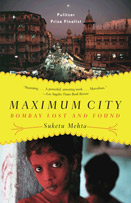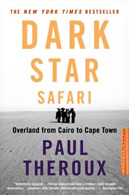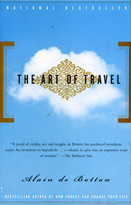Depending on weather and road conditions, it takes anywhere from 3-5 hours to drive from Kathmandu to the border town of Kodali. Though the weather was great, much of the road was unpaved, and as our little Kia 4x4 bounced, rattled and lurched its way through twisting mountain roads, I began wondering if my back would give out again. We climbed our way out of the Kathmandu valley and watched the landscape slowly change from lush greenery to a more arid mountainous terrain.
The Nepali town of Kodali and the Tibetan town of Zhangmou cling to opposite cliff-sides of a steep river gorge, and are connected by the no-man’s land of the Friendship Bridge (yes, that’s really what they call it). Long lines of semis and tankers queue up on either side. The border is closed from 5pm to 9am, and truckers who find themselves still stuck in line at 5 have to spend the night in their cabs.
About a year ago, a small group of westerners had come into Tibet and unfurled a giant Tibetan flag on a mountainside somewhere--the Chinese government was of course upset, the westerners were deported, and since then all tourists are required to have a guide/escort/sponsor to enter the "Tibet Autonomous Region". We officially left Nepal as we walked over the bridge, and our guide was to hand us over to his Tibetan counterpart once we got to Zhangmou.

Jacqueline and I were scrutinized by the soldiers at Chinese immigration, and they looked skeptically at our passports and visas. The three of us started walking to the large arch at bridge’s end, but we were met with waving arms and angry bursts of Mandarin. There was some tense back-and-forth between the soldiers and our guide (and since our guide barely spoke any Mandarin, I don’t think the discussion was very constructive). Everything seemed to be settled, and we starting walking again. More pointing, more angry exchanges. Our guide looked as baffled as we were, but he assumed they were suspicious of his credentials/paperwork.
We waited on the bridge for about an hour, looking at the mountains, and the river way below us. We were conspicuous, the only two white people anywhere in the area, and we drew many curious stares. We watched the lines of pedestrian and oxcart traffic moving back and forth--round Tibetan faces with impossibly pink cherubic cheeks; small men and women carrying huge loads, with hair and clothing that looked eerily similar to that of the Anastasi or Navajo. Replace the Red Guard with US Cavalry, and we could have been in the American southwest circa 1900.
The Chinese soldiers were young and swaggering, looking bored and frustrated to be stuck in such a remote post. They often treated the locals with impatience and annoyance: barking orders, pointing, taking pleasure in making people nervous. The soldiers spoke only Mandarin, and were mostly from rural areas far away from Tibet. We were told that it was largely intentional. The Chinese often rotated soldiers in and out of this post frequently: If anyone stayed here long enough to learn Nepali or Tibetan, there was a concern they might acquire some local attachments or sympathies.
Eventually our guide was able to talk his way past the sentries, somehow… he returned with our Tibetan guide who walked us through the arch... We were finally in-!!

Past the crowds, we climbed into the waiting land cruiser and proceeded up the steep, partially-paved switchbacks into Zhangmou. More bouncing and lurching. Jacqueline and I marveled at the 100+ semi trucks precariously lined on the narrow cliffside roads, waiting hours or days to enter Nepal. The weather that day was cold and clear, but often the roads are muddy from rain or iced over. I asked our guide “Aren’t there a lot of accidents? Do many trucks fall into the ravine?”
“Yes.”
It’s a priority of the Chinese government to build a safe modern highway from Lhasa to the Nepal border. They’re about two-thirds finished, but the last stretch (which includes the precarious cliff trail) isn’t set to be paved until the spring thaw.

All of China is on Beijing time, so by crossing over into Tibet we instantly jumped ahead about four hours. We settled for the evening in a ramshackle hotel in Zhangmou. Peeling pergo floors; exposed wires and rebar; a decade’s worth of cigarette burns on the sheets and drapes. The bathroom was perfect abattoir chic: chipped tile with a strange filmy coating and blackened grout. There was no actual 'shower stall' to speak of; the shower was a faucet in the wall by the toilet, a plastic bucket and a drain in the center of the bathroom. There are very few travelers or tourists in December, and only 2 or 3 rooms besides ours were occupied. The hot water had been turned off for the winter(!) but the hotel proprietor offered to arrange for us the use of a public bath down the road. We politely declined. Curiously there was neither a heater nor any form of insulation in the room. In fact the whole hotel had paper-thin walls, and the hotel was in the habit of leaving their front lobby door wide open, day and night. We both slept in our boots, scarves and winter jackets underneath the bed covers… we went to bed cold, woke up even colder, and were unable to shake the chill.

About 4 or 5 days earlier, Jacqueline and I had been luxuriating at the W-Walkerhill hotel in Seoul, drinking mojitos at the painfully hip hotel bar, enjoying our environs as much as possible, knowing that our accommodations throughout Tibet, Nepal and India were likely going to be rough.
The Nepali town of Kodali and the Tibetan town of Zhangmou cling to opposite cliff-sides of a steep river gorge, and are connected by the no-man’s land of the Friendship Bridge (yes, that’s really what they call it). Long lines of semis and tankers queue up on either side. The border is closed from 5pm to 9am, and truckers who find themselves still stuck in line at 5 have to spend the night in their cabs.
About a year ago, a small group of westerners had come into Tibet and unfurled a giant Tibetan flag on a mountainside somewhere--the Chinese government was of course upset, the westerners were deported, and since then all tourists are required to have a guide/escort/sponsor to enter the "Tibet Autonomous Region". We officially left Nepal as we walked over the bridge, and our guide was to hand us over to his Tibetan counterpart once we got to Zhangmou.

Jacqueline and I were scrutinized by the soldiers at Chinese immigration, and they looked skeptically at our passports and visas. The three of us started walking to the large arch at bridge’s end, but we were met with waving arms and angry bursts of Mandarin. There was some tense back-and-forth between the soldiers and our guide (and since our guide barely spoke any Mandarin, I don’t think the discussion was very constructive). Everything seemed to be settled, and we starting walking again. More pointing, more angry exchanges. Our guide looked as baffled as we were, but he assumed they were suspicious of his credentials/paperwork.
We waited on the bridge for about an hour, looking at the mountains, and the river way below us. We were conspicuous, the only two white people anywhere in the area, and we drew many curious stares. We watched the lines of pedestrian and oxcart traffic moving back and forth--round Tibetan faces with impossibly pink cherubic cheeks; small men and women carrying huge loads, with hair and clothing that looked eerily similar to that of the Anastasi or Navajo. Replace the Red Guard with US Cavalry, and we could have been in the American southwest circa 1900.
The Chinese soldiers were young and swaggering, looking bored and frustrated to be stuck in such a remote post. They often treated the locals with impatience and annoyance: barking orders, pointing, taking pleasure in making people nervous. The soldiers spoke only Mandarin, and were mostly from rural areas far away from Tibet. We were told that it was largely intentional. The Chinese often rotated soldiers in and out of this post frequently: If anyone stayed here long enough to learn Nepali or Tibetan, there was a concern they might acquire some local attachments or sympathies.
Eventually our guide was able to talk his way past the sentries, somehow… he returned with our Tibetan guide who walked us through the arch... We were finally in-!!

Past the crowds, we climbed into the waiting land cruiser and proceeded up the steep, partially-paved switchbacks into Zhangmou. More bouncing and lurching. Jacqueline and I marveled at the 100+ semi trucks precariously lined on the narrow cliffside roads, waiting hours or days to enter Nepal. The weather that day was cold and clear, but often the roads are muddy from rain or iced over. I asked our guide “Aren’t there a lot of accidents? Do many trucks fall into the ravine?”
“Yes.”
It’s a priority of the Chinese government to build a safe modern highway from Lhasa to the Nepal border. They’re about two-thirds finished, but the last stretch (which includes the precarious cliff trail) isn’t set to be paved until the spring thaw.

All of China is on Beijing time, so by crossing over into Tibet we instantly jumped ahead about four hours. We settled for the evening in a ramshackle hotel in Zhangmou. Peeling pergo floors; exposed wires and rebar; a decade’s worth of cigarette burns on the sheets and drapes. The bathroom was perfect abattoir chic: chipped tile with a strange filmy coating and blackened grout. There was no actual 'shower stall' to speak of; the shower was a faucet in the wall by the toilet, a plastic bucket and a drain in the center of the bathroom. There are very few travelers or tourists in December, and only 2 or 3 rooms besides ours were occupied. The hot water had been turned off for the winter(!) but the hotel proprietor offered to arrange for us the use of a public bath down the road. We politely declined. Curiously there was neither a heater nor any form of insulation in the room. In fact the whole hotel had paper-thin walls, and the hotel was in the habit of leaving their front lobby door wide open, day and night. We both slept in our boots, scarves and winter jackets underneath the bed covers… we went to bed cold, woke up even colder, and were unable to shake the chill.

About 4 or 5 days earlier, Jacqueline and I had been luxuriating at the W-Walkerhill hotel in Seoul, drinking mojitos at the painfully hip hotel bar, enjoying our environs as much as possible, knowing that our accommodations throughout Tibet, Nepal and India were likely going to be rough.





2 comments:
Happy holidays and get well soon to Jacqueline! Keep the posts coming - I love traveling vicariously through you guys without having to brave the cold and the yak food.
thanks Walt, happy new year!
I never felt I could get the stench of yak butter out of my nose... at some point I realized that the Chinese Yuan I was carrying around in my pockets, and touching, and exchanging, all reeked of it. Yum.
Post a Comment